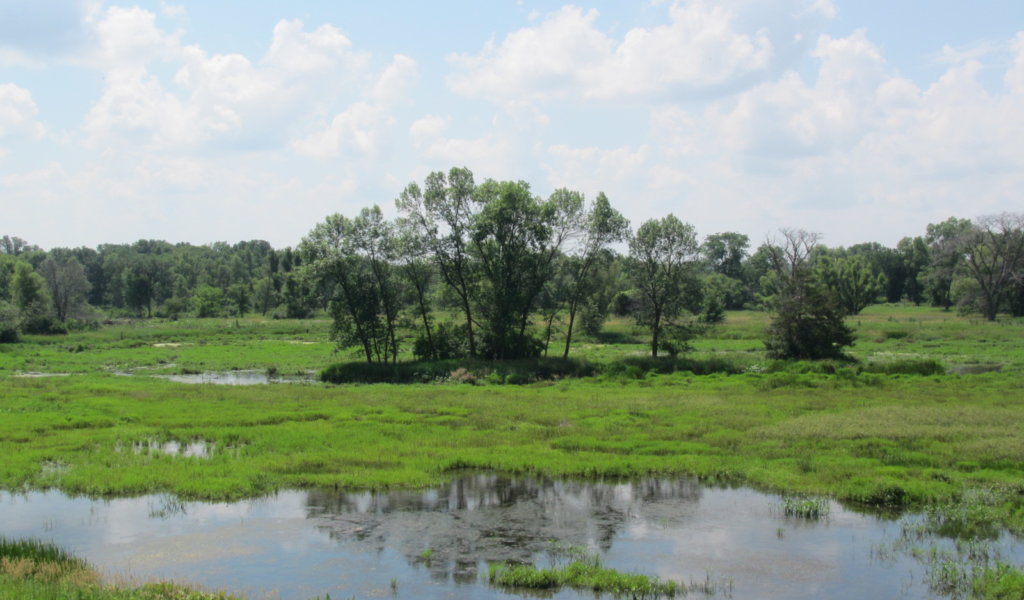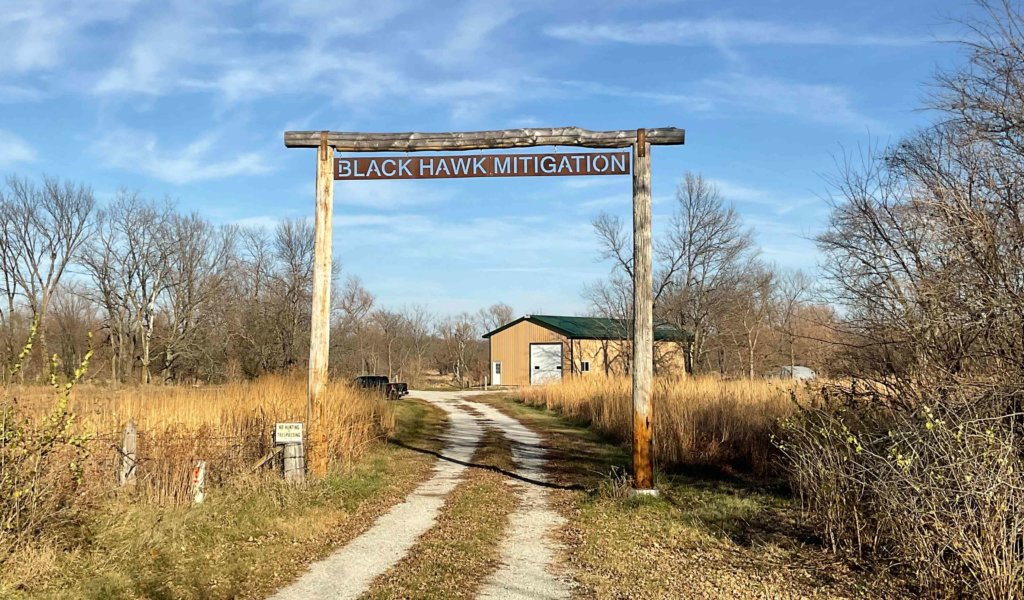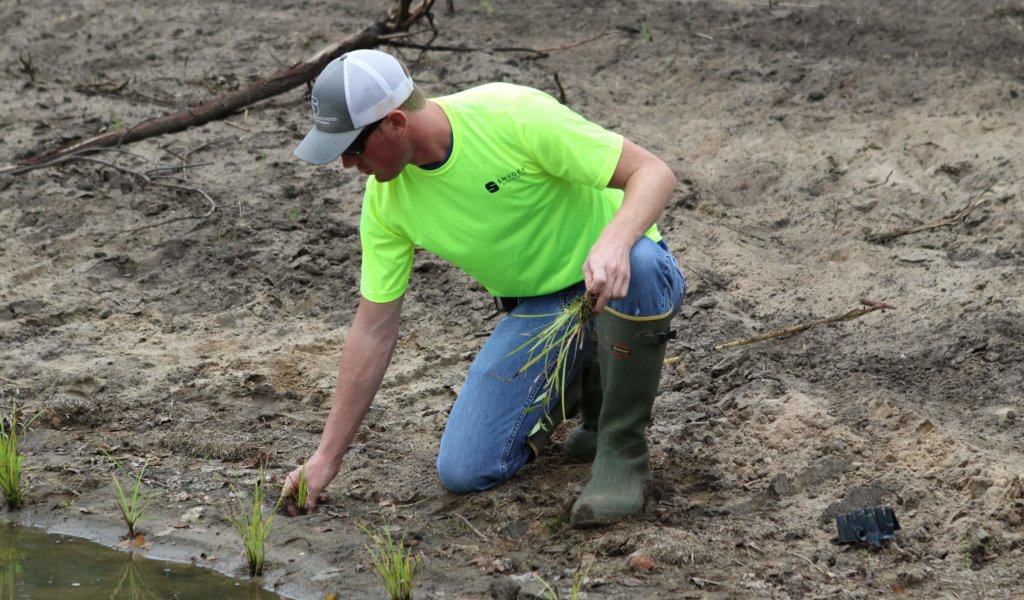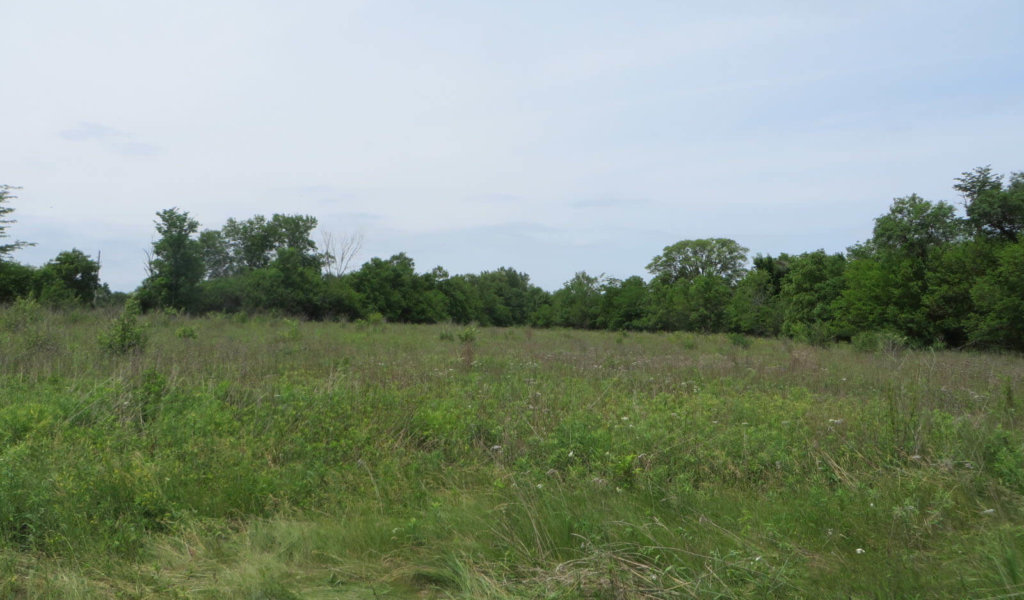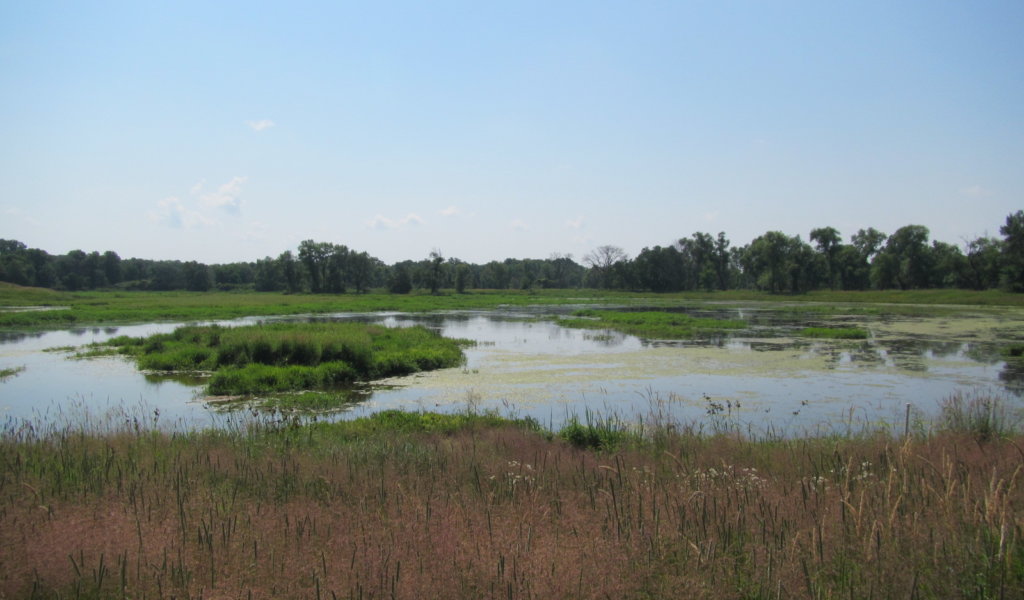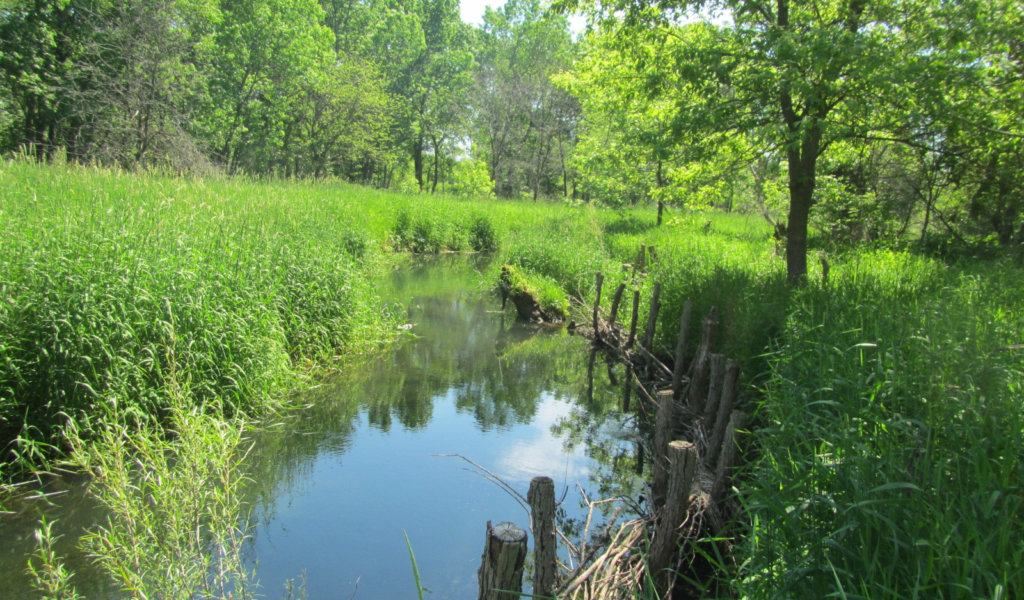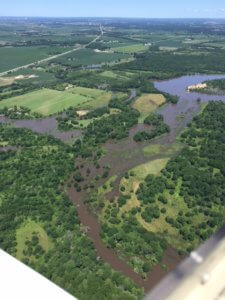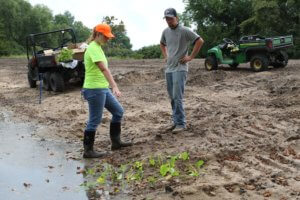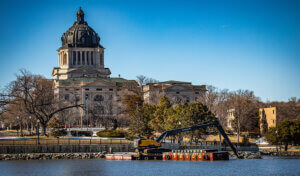
Birth of Stream Mitigation Banking in Iowa
Wetland mitigation banking systems have been used across the country for well over two decades now. This banking system has proved so successful that it’s also being applied to a different resource — streams. The Snyder & Associates team assisted a group of Black Hawk County property owners in developing the first stream mitigation bank in the state of Iowa to offer stream credits for purchase that would offset losses to waters of the United States (WOTUS).
Understanding Mitigation Credit Purpose
Beginning in 2008, The U.S. Army Corps of Engineers (USACE) Mitigation Rule has required construction projects to mitigate the loss of all WOTUS, including waterways and wetlands. Mitigation hierarchy states the preferred mitigation option is to purchase credits from an approved bank site, if available. In terms of regulations and performance standards, approved bank sites are held to a much higher standard than other alternatives. The purchase of credits also takes the pressure off applicants since they’re not required to locate a mitigation site, develop and improve the necessary resources, or monitor the mitigation site in the future.
Mitigation banks use a market-based approach to compensate for unavoidable impacts to wetlands in a large watershed, known as the service area. Wetland mitigation bank credits are made available after restoring, creating, or enriching formerly converted wetlands protected by a conservation easement.
In Iowa, a group of private landowners noticed the demand for additional wetland credits in north-central and eastern Iowa and reached out to Snyder & Associates. Our team completed environmental documentation and feasibility studies for a proposed Black Hawk Mitigation Bank. Once completed, we worked with the Interagency Review Team (IRT) to obtain the necessary approvals for our clients to sell credits and construct their banks. By contacting Snyder & Associates early in the process, these applicants saved substantial time and money.
Creating Black Hawk Mitigation Bank
The Cedar River floodplain in Black Hawk County is a vast area comprised of forests, wetlands, and upland prairie. Our team initially began this project with a focus on wetland mitigation banking. However, after completing the fieldwork and working with the Iowa Stream Mitigation Method, our experts determined it was possible to include stream mitigation, as well.
Snyder & Associates provided extensive environmental services for the project ranging from wetland delineation, stream assessment, threatened and endangered species habitat survey, 404 permitting, and floodplain permitting. With close to 250 available acres, we created a 205-acre mitigation bank focusing on three sections: Emergent Wetlands, Forested Wetlands, and Streams.
Emergent Wetlands
After identifying 63-acres with the potential to create and enhance emergent wetlands, our team created four separate wetlands while enhancing the remaining 40-acres. Through significant grading processes, we formed undulating wetland bottoms, which allow for diverse submergent and emergent habitats during wet seasons. These sections and their wetland hydrology are self-sustaining through groundwater, precipitation, runoff, and flooding from the Cedar River. Once native vegetation was established, they require little maintenance.
Forested Wetlands
Nearly 90-acres of the project site are categorized as forested wetlands lying at slightly differing elevations. Though not extreme, these elevation changes generate soil, vegetation, and species variations which are vital in creating diverse habitats. Low lying areas are often inundated during flood events and feature plants such as swamp white oak, American elm, and silver maple. Upland areas of the site are accustomed to dryer soils. Here, you will find species that require less precipitation such as white oak, black walnut, and shagbark hickory. By encompassing both wetland and upland habitat, the bank protects ecological functions, values, and processes essential to the watershed.
Streams
During initial inspections, widespread erosion was identified along the 3,500-linear-foot stretch of Mud Creek flowing through the mitigation site. The erosion was stabilized through a two-system approach. First, willow walls combining timbers and woven branches were installed. These establish a live root network to bind the soils together while foliage slows floodwaters during high water events and stabilizes the eroding streambank. Second, over 600 native shrub plantings were placed along the outside bend of nine meanders to encourage natural stabilization. Together, these sustainable mitigation methods created a stable streambank that will continue to develop diverse vegetation as time passes.
Continual Wetland Monitoring & Assessment
Annual monitoring and maintenance have witnessed extensive improvement and growth in the area. Our environmental team regularly walks the wetland areas looking for field indicators showing the restored mitigation is functioning properly. During these assessments, they document mitigation bank performance standards and discuss continued maintenance with individual Bank Sponsors. These processes continue annually for the life of the bank.
Black Hawk Mitigation Bank has now generated 45.56 emergent wetland credits, 23.17 forested wetland credits, and 9,423 stream credits. Since its approval, many other stream mitigation banks have followed in its wake. The Snyder & Associates team is proud to have been the first to bring this beneficial service to Iowa.
